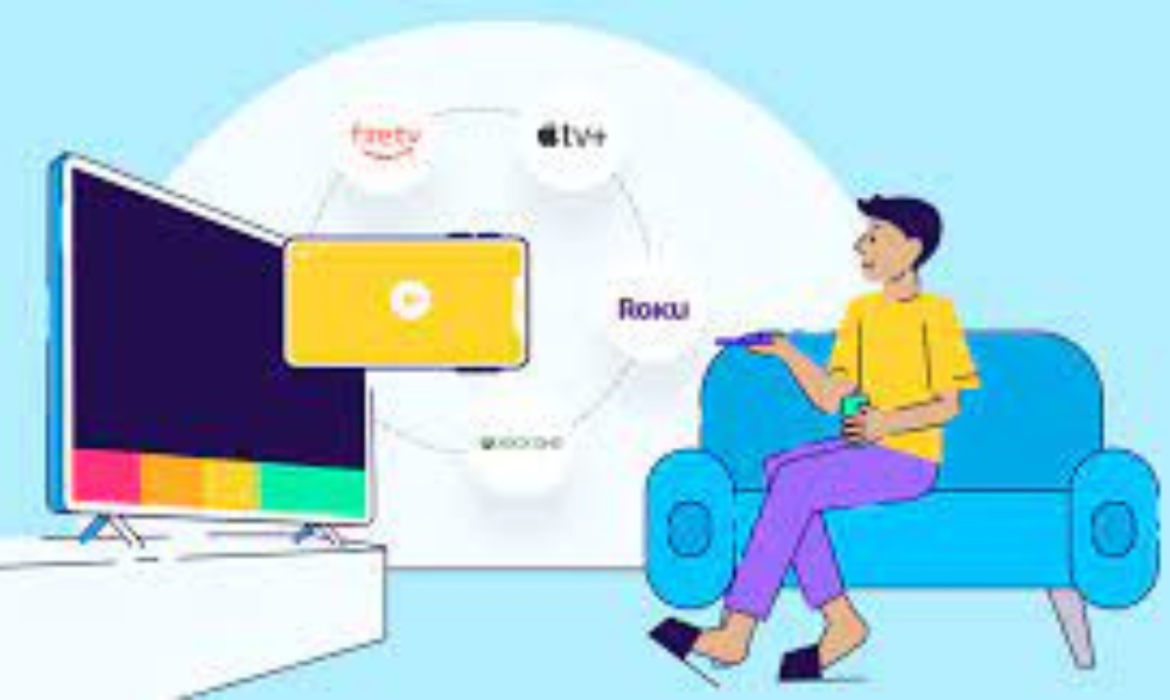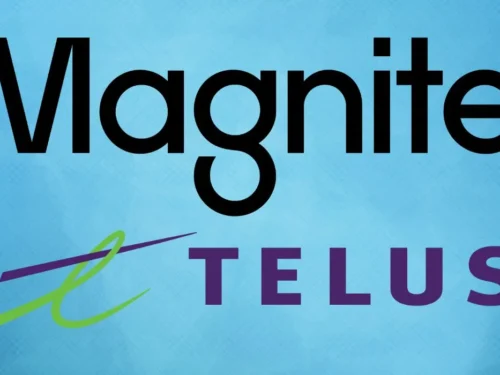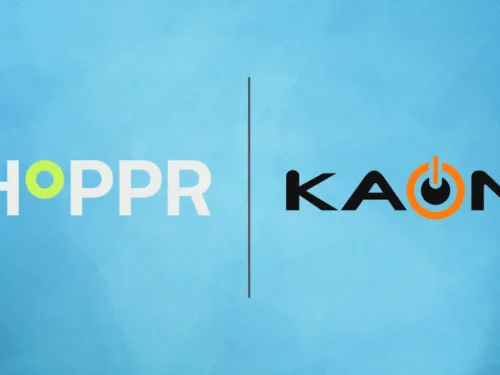Connected TV Explained: The Essential Glossary Of CTV
Connected TV (CTV) is growing rapidly in programmatic advertising and taking it by storm. And it does not come as a surprise!
CTV ads are most effective, highly targeted, trackable, and brand safe. Compared to traditional TV advertising, they offer broadcast-quality ad experiences. According to the CTV Neilsen guide, 60% of U.S. advertisers plan to shift ad dollars from linear TV to either connected TV (CTV) or over-the-top (OTT) this year.
Given the growth in consumption and advertising opportunities, CTV usage has increased by 123% since 2018. However, given the breadth of CTV, identifying ad opportunities is not easy. In most cases, Over-the-top (OTT) and Connected TV (CTV) devices are confused for one another when accessing TV/video content. Moreover, adding Linear TV or traditional TV (in today’s parlance) makes the water even murkier.
Thus, this glossary explains the difference between Connected TV (CTV), Over-The-Top (OTT), and Linear TV. In a quickly evolving programmatic advertising landscape, the glossary aggregates many terms and acronyms used by marketers.
Interesting Read: All You Need To Know About Connected TV Advertising!
First Things First
Before we delve into other terminologies, let us understand the baseline definition of certain streaming terms.
Linear TV
Linear TV is a traditional cable or satellite TV with set viewing timings. A viewer can watch a show at a specific time on a specific channel.
Connected TV
CTV or Connected TV simply means any device like smart TV used to stream TV and video content through the internet. A TV set that can access OTT content and is connected to the internet. According to a recent report, 80% of U.S. TV households have at least one connected TV device. Connected to the digital world, CTV can display programmatic ads to its viewers in real-time.
Interesting Read: Trade Desk Partners With Samsung Ads For Programmatic CTV
Over-The-Top (OTT)
To put it simply, this is the process of streaming content from an app on a CTV or any other internet-connected device. In addition to video-on-demand platforms, OTT applications include audio streaming, messaging, and internet-based phone services.
A Similar Offering
There is a new set of industry jargon that is often confused with Connected TV advertising. They are remotely close to CTV but not the same.
Programmatic TV
A method of buying and delivering ads on linear TV with a technology-automated and data-driven slant. Some TV ad slots are available for programmatic purchase through DSPs. The most important point to note is that the ads are different from Connected TV (CTV). There is a common misconception that programmatic TV is referred to as “CTV Programmatic” or “OTT Programmatic.” These terms refer to Connected TV, as opposed to traditional TV. Understanding this difference is vital for advertising professionals in this new environment.
Advanced TV
An umbrella term referring to any TV content streamed through the internet -live or on-demand. It includes OTT, connected TV (CTV), and addressable TV but beyond traditional, linear TV models. Advanced TV’s is popular worldwide. A Samsung study suggests 63% of all TV viewing time is held on streaming services.
Addressable TV
Addressable TV or ATV is a technical ability to provide each household watching a different ad experience for the same program. It enables advertisers to target specific audiences with individual advertisements and optimize their marketing campaigns. Ads for addressable TV are served programmatically just as they are for addressable digital advertising.
For instance, Mr.A might experience real estate advertisements because they are looking to buy a house, while you see an ad for a motorbike based on your previous interest.
The below image explains how the addressable TV works.
Interesting Read: Here, There, Everywhere, It Is Cross-Screen Advertising!
Inventory and Formats
Video on Demand (VOD)
Video-On-Demand (VOD) is also known as Addressable VOD. Users can watch the content they enjoy at any time that’s convenient for them. Television viewers don’t plan their schedules around the TV, instead, they fit it into their own busy schedules.VOD content can be streamed or downloaded after it is aired live. As a result, viewers can access it anytime and anywhere even if they miss an episode. It can be found on set-top boxes, OTT content services, mobile web, mobile apps, and video streaming services. Unlike traditional TV, viewers can pause, fast-forward, and play as per their choice, and ads are placed within the content.
SVOD
Subscription video on demand (SVOD) is a streaming service based on a subscription model. Consumers subscribe for a fee, to access a catalog of on-demand content and watch are ad-free content. SVOD examples include Netflix, Amazon Prime, Disney+, HBO MAX, and AppleTV+.
Some SVOD providers, on the other hand, offer a hybrid model that offers ad-supported content at a lower subscription price. Hybrids are categorized under SVOD since users still need to login and pay a subscription fee. Hulu, Peacock, ESPN+, and Quibi are a few examples.
AVOD
Advertising-based video on demand (AVOD) is ad-supported content and free to consumers. YouTube and Hulu are the best examples.
TVOD
Transactional video on demand is the opposite of SVOD. Customers buy content on a per-view basis. A customer would pay for a movie or TV show that they desire to watch. Examples of TVOD are Google Play, Apple iTunes, or YouTube movies.
Multi-channel Video Programming Distributor (MVPD)
In layman’s terms, it is a service that provides multiple television channels. The service providers deliver video programming services for a subscription fee through cable or satellite television. Examples include Comcast, DirecTV, DISH, Cox, Verizon, and more.
vMVPD
vMVPD stands for Virtual multichannel video programming distributor (yes, quite a mouthful). These are also called skinny bundles and offer economical digital cable or satellite packages. A streaming service or service provider provides video programming over the Internet without creating their own content. Sling TV, Playstation Vue, Pluto TV (Viacom), Xumo are a few examples.
Wrapping Up
Connected TV (CTV) is becoming a part of every marketer’s brand mix. Brace yourself for the future of advertising. This guide is an effort to well-versed you in the exciting world of Connected TV (CTV) terms.
Quick Recap
A quick recap of the full-on dictionary of Connected TV (CTV)terms with an illustrated guide.
Interesting Read: The Ultimate A-Z Glossary Of Digital Advertising!
Author Profile

- Neha Mehta
- Neha started her journey as a financial professional but soon realized her passion for writing and is now living her dreams as a content writer. Her goal is to enlighten the audience on various topics through her writing and in-depth research. She is geeky and friendly. When not busy writing, she is spending time with her little one or travelling.
Latest Posts
 Interview and Guest PostJuly 19, 2024Navigating Ad Tech: Equativ’s Jacqueline Chua’s Strategic Insights
Interview and Guest PostJuly 19, 2024Navigating Ad Tech: Equativ’s Jacqueline Chua’s Strategic Insights Interview and Guest PostJune 21, 2024CTV Exploration: Chandrahas Shetty, Demand Facilitation Lead, India, On Growth And Privacy
Interview and Guest PostJune 21, 2024CTV Exploration: Chandrahas Shetty, Demand Facilitation Lead, India, On Growth And Privacy Interview and Guest PostJune 14, 2024Advertising Evolution: Rasha El-Ghoussaini on Snap Inc.
Interview and Guest PostJune 14, 2024Advertising Evolution: Rasha El-Ghoussaini on Snap Inc. Interview and Guest PostJune 5, 2024Navigating Digital Waves: Shrenik Gandhi’s Journey with WRM
Interview and Guest PostJune 5, 2024Navigating Digital Waves: Shrenik Gandhi’s Journey with WRM










